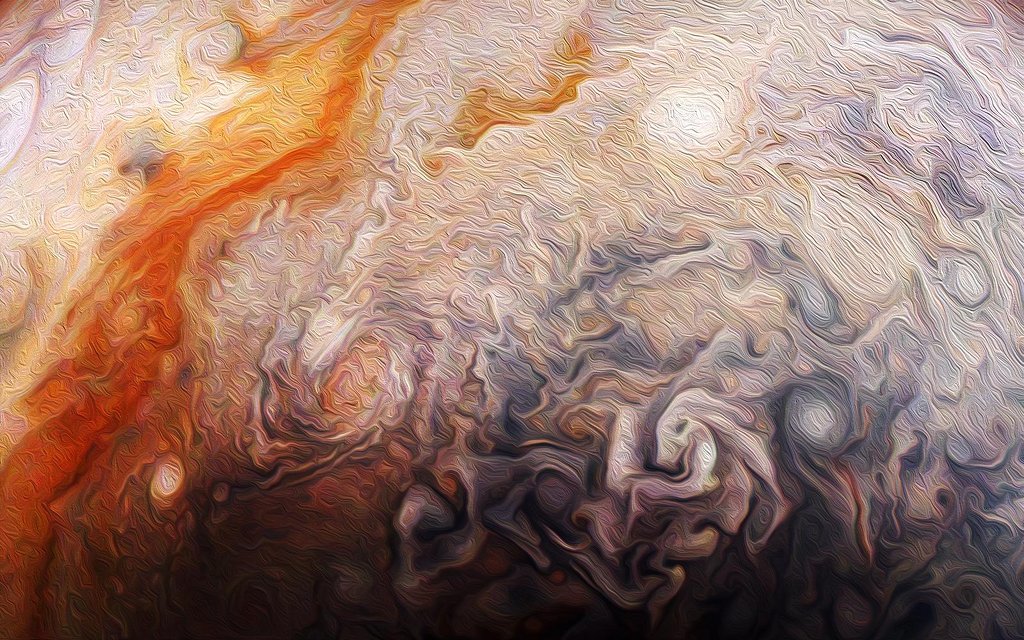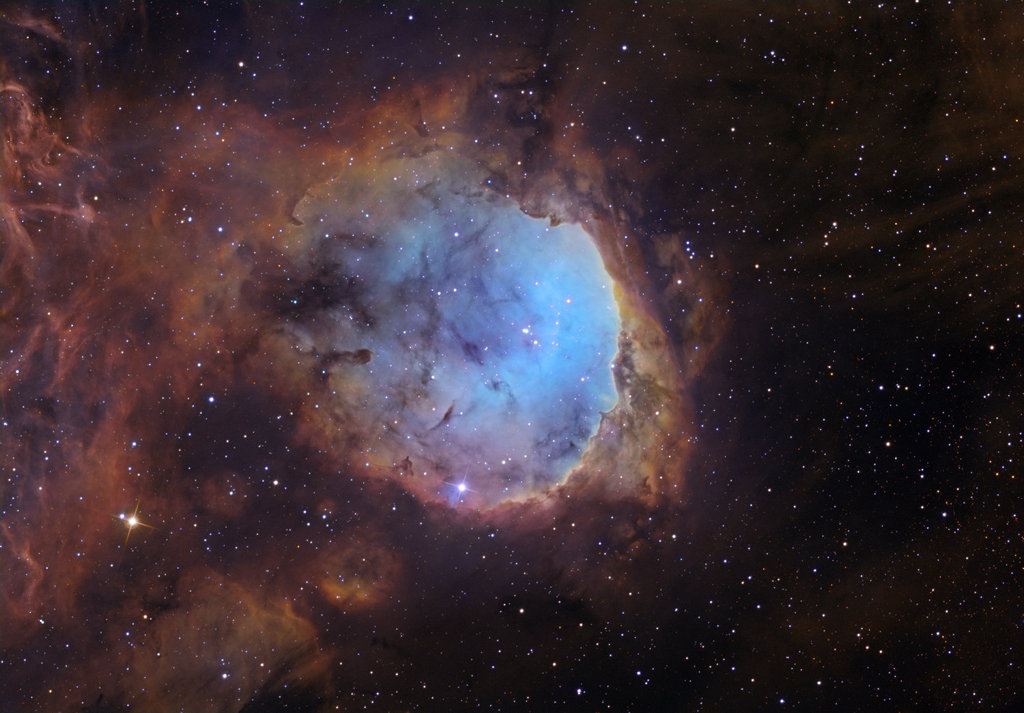
The Sun Unleashed: Monster Filament in Ultraviolet



Image Credit: NASA, JPL-Caltech, SwRI, MSSS; Processing: Rick Lundh
Explanation: Brush strokes of Jupiter’s signature atmospheric bands and vortices form this planetary post-impressionist work of art. The creative image uses actual data from the Juno spacecraft’s JunoCam. To paint on the digital canvas, a image with light and dark tones was chosen for processing and an oil-painting software filter applied. The image data was captured during perijove 10, Juno’s December 16, 2017 close encounter with the solar system’s ruling gas giant. At the time the spacecraft was cruising about 13,000 kilometers above northern Jovian cloud tops.

Image Credit & Copyright: Martin Pugh
Explanation: This bright cosmic cloud was sculpted by stellar winds and radiation from the hot young stars of open cluster NGC 3324. With dust clouds in silhouette against its glowing atomic gas, the pocket-shaped star-forming region actually spans about 35 light-years. It lies some 7,500 light-years away toward the nebula rich southern constellation Carina. A composite of narrowband image data, the telescopic view captures the characteristic emission from ionized sulfur, hydrogen, and oxygen atoms mapped to red, green, and blue hues in the popular Hubble Palette. For some, the celestial landscape of bright ridges of emission bordered by cool, obscuring dust along the right side create a recognizable face in profile. The region’s popular name is the Gabriela Mistral Nebula for the Nobel Prize winning Chilean poet.